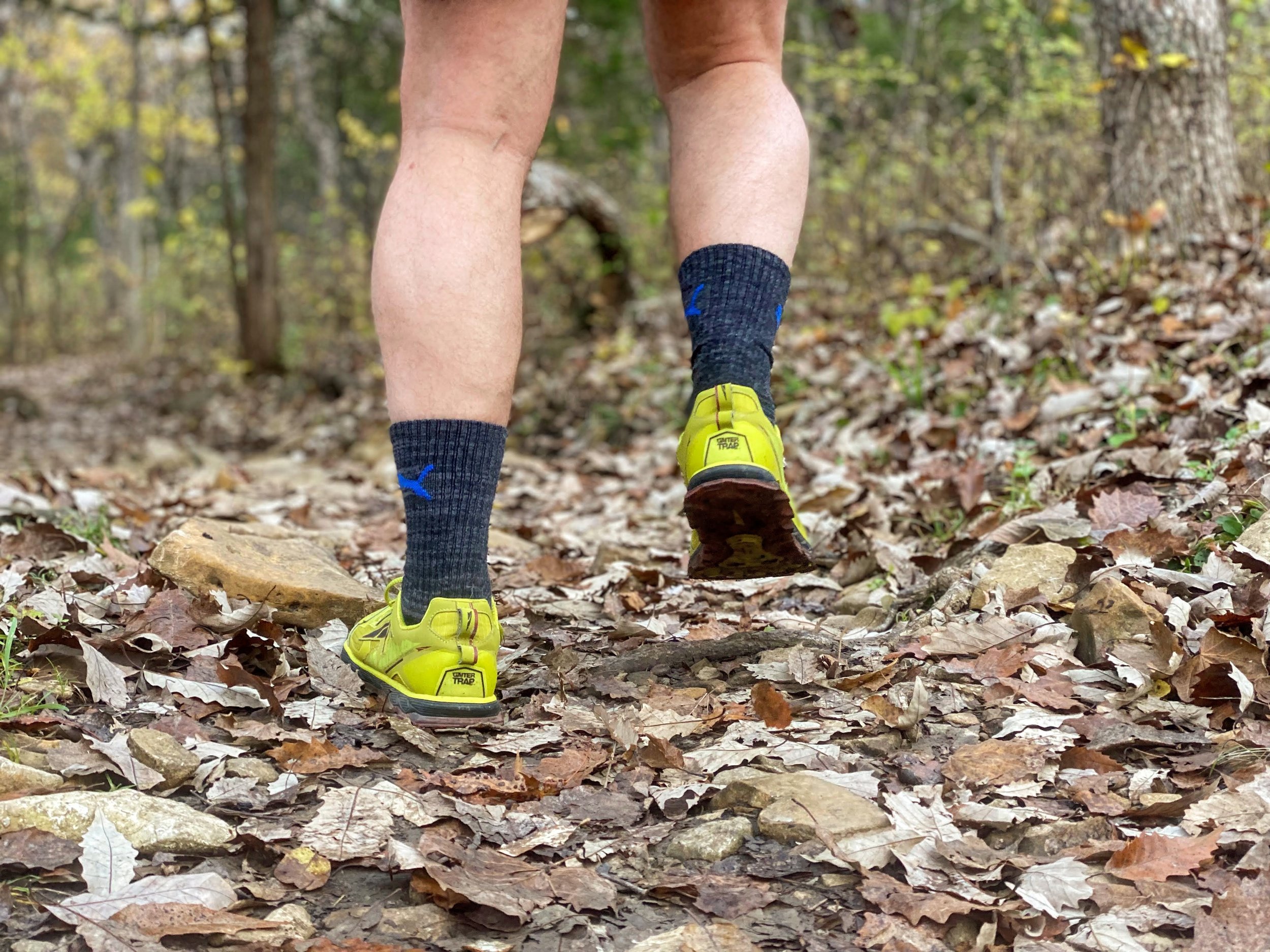Calf Strain and Pain
Calf Injury
Calf strains and pains are common in runners and sports requiring jumping. Mild calf pain due to delayed onset muscle soreness (DOMS) may occur with overuse, a long run, or speedwork. But a "pull" or strain feeling that persists for more than two days could be a Grade 1 calf strain. A severe, slow gripping and grabbing pain in the calf during a run or a shotgun-type sharp pain with a pop in the back of your lower leg may indicate a more severe injury involving muscle tears.
The most frequent question from injured athletes is, "How long will it take to heal, and when can I return to sport?" The amount of time it takes to heal and return to sport depends upon the severity of your strain. So we must start with an evaluation.
If you have pain in your calf, follow Coach Amy's acute injury steps and schedule an appointment with Coach Amy.
Evaluation of Injury
Coach Amy will evaluate your injury to determine which calf muscle group you injured and assess the severity so she can prescribe a specific rehabilitation protocol. During your evaluation, Coach Amy will also perform tests to rule out other possible sources of calf pain.
Treatment
Your rehabilitation care plan will be specific to your sport, the severity of the injury (see above), and the calf muscle you injured.
There are many calf muscles in your leg. The most commonly injured back of the leg calf muscles are the gastrocnemius and soleus. Sprinters and dancers typically suffer injuries to the gastrocnemius, and endurance athletes typically suffer injuries to the soleus.
If your symptoms came on as a slow gripping grab that progressively worsened, it is likely your soleus muscle group. If it felt like a sudden shot in the leg, your gastrocnemius was probably injured.
Week 1 Goals:
Decrease pain and swelling. Protect the calf from further injury.
Schedule evaluation with Coach Amy, including 1/wk follow-up for at least four weeks.
Do not stretch or foam roll the calf.
Wear a compression sock or a neoprene compression sleeve.
You may use recovery compression boots.
Ice 20 min on/off 3x/day.
Use crutches or another assistive device to decrease your weight on the calf if the pain is more than 3/10 with walking. With a grade 3 strain, you will need to be non-weight-bearing during this time.
Stop activities that involve running/jumping.
Avoid deep tissue massage or massage guns.
Avoid inflammatory foods and eat those that help curb inflammation.
Take NSAIDs like Aleve or Ibuprofen to control pain only if needed to sleep or function.
Week 2-3 Goals:
Decrease pain and swelling, promote blood flow and prevent further injury.
Physical therapy 1x/wk.
Gentle range of motion of foot: ankle circles/"air alphabet."
Moist heat. 20 min. 1-2x/day.
Do not stretch or foam roll the calf.
Avoid deep tissue massage or massage guns.
Continue compression garments, sleeves, or boots.
Stationary Bike/Trainer: 10 min, no resistance, no pain.
Continue with an assistive device if your pain is more than 3/10 with walking.
Swimming is OK as long as there is no pain while swimming during or after. Do not wear fins, and do not push off the wall.
Avoid NSAIDs if possible.
Week 3-6 Goals:
Restore range of motion and strength. Grade 1-2 begin, return to sport as tolerated.
Physical therapy 1x/wk.
Stretch protocol prescribed by a physical therapist.
Strength protocol prescribed by a physical therapist.
Stationary Bike/Trainer: up to 30 min as tolerated.
Gradual, progressive return to walk/run program protocol prescribed by a physical therapist.
Massage and modified foam as tolerated.
No NSAIDs. If these are required to control pain, then you are not ready for this stage of recovery.
Week 7-12 Goals:
Return to sport and injury prevention.
Physical therapy 1/wk for Grade III strain. Grade II may graduate or progress to bi-monthly.
Progressive, sport-specific strengthening protocol prescribed by a physical therapist.
Return to running protocol.
Early evaluation and treatment with a skilled and experienced physical therapist can help you recover thoroughly, return to sport, prevent chronic pain and dysfunction of the calf, and prevent injury to other areas of the body that occur with long-term compensations.


